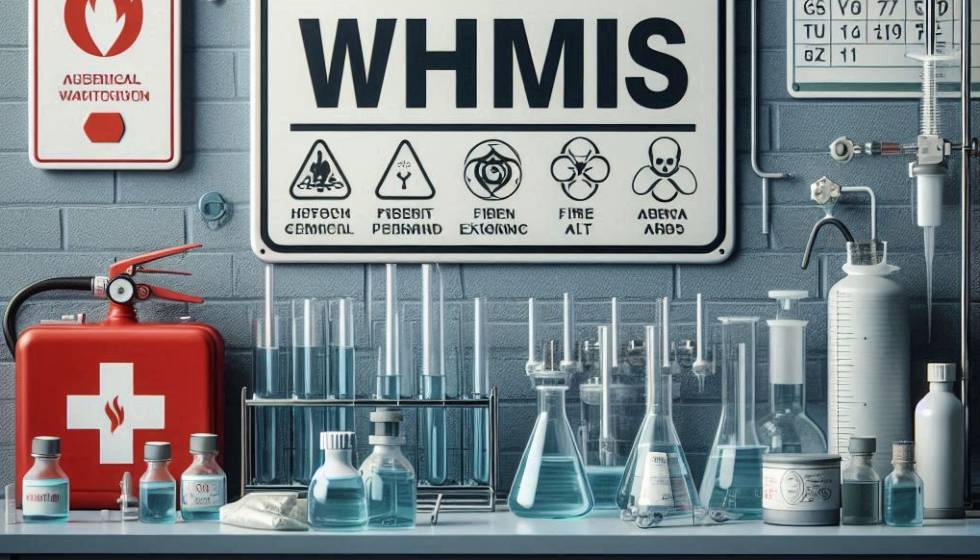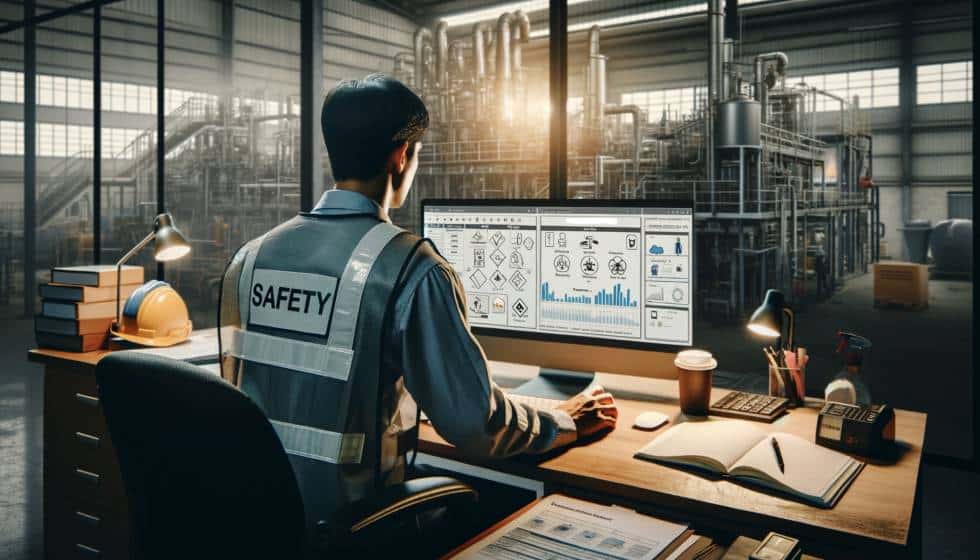What Is a WHMIS Program?
A WHMIS program is a comprehensive system designed to ensure that hazardous materials in your workplace are properly labeled, documented, and understood by your employees. It provides information on safe handling, storage, and disposal, reducing the risk of accidents. In other words, it’s your hazmat guardian angel.
In 2015, Canada updated WHMIS to align with the Globally Harmonized System (GHS) of classification and labeling. This WHMIS 2015 standard is mandatory nationwide and simplifies hazard identification with consistent symbols, signal words, and hazard statements.

Understanding WHMIS Regulations
Complying with WHMIS regulations means following rules on classification, labeling, and worker education:
- Classification: Determine what hazards are present in the materials you handle. Are they flammable? Corrosive? Explosive?
- Labeling: Ensure every container has the proper label indicating its hazards. Labels must follow the GHS standard.
- Safety Data Sheets (SDS): These detailed documents give the lowdown on each hazardous product, including potential hazards, handling instructions, and emergency procedures.
- Training and Education: Every employee must receive training on WHMIS, including how to read labels and safety data sheets.
WHMIS Ontario: Provincial Guidelines
In Ontario, the WHMIS program is enforced through the Occupational Health and Safety Act. Some Ontario-specific requirements include:
- Employer Responsibility: Employers must provide training, updated SDSs, and control measures tailored to their workplace.
- Worker Participation: Workers should actively participate in the WHMIS program by asking questions and reporting safety concerns.
- Monitoring and Review: Regularly review your WHMIS program to ensure ongoing compliance.

Five Key Elements of a Successful WHMIS Program
Building a robust WHMIS program for your workplace boils down to five key elements:
- Hazard Identification and Classification: Identify every hazardous material in your inventory. Get specific—generic labels like “Cleaner” won’t cut it. Each material needs to be properly classified according to WHMIS 2015 guidelines.
- Accurate Labeling: Ensure every container has the appropriate WHMIS-compliant label, including the product name, hazard symbols, and a clear indication of the dangers involved.
- Safety Data Sheets (SDS): Keep an updated collection of SDSs that are readily accessible. Your SDSs should have all the necessary information, from proper storage guidelines to first-aid measures.
- Training and Education: Create a training program that ensures every worker understands WHMIS regulations and the specific hazards of the materials they handle. Provide regular refreshers to keep safety knowledge fresh.
- Continuous Improvement: Make WHMIS a regular part of your workplace safety meetings. Review incident reports, assess hazard controls, and keep employees informed about any new risks or procedures.
Related Blog: WHMIS Training: Why You Need It!
Effective WHMIS Safety Practices
Maintaining WHMIS safety requires daily diligence. Here are some practical tips to keep everyone on their toes:
- Practice What You Preach: Ensure that employees follow labeling guidelines and use PPE (personal protective equipment) properly.
- Stay Organized: Keep your chemical inventory up to date, and replace any outdated SDSs immediately.
- Emergency Preparedness: Conduct regular drills so that workers know what to do in case of a spill, exposure, or fire.
- Use Engineering Controls: Whenever possible, install fume hoods, ventilation systems, or containment barriers to minimize exposure.
- Regular Audits: Carry out audits to identify compliance gaps and areas for improvement.
Final Thoughts
A comprehensive WHMIS program isn’t just a regulatory requirement—it’s a powerful tool to protect your workers and business. From hazard classification to continuous training, ensure your team is well-prepared with accurate information and the right protective gear.
Looking for more specialized training? Valley Worksafe offers an easy to access online WHMIS training course (WHMIS 2015 GHS) specifically designed to help get you and
Watch Our Safety Video here: https://www.youtube.com/@valleyworksafe/

